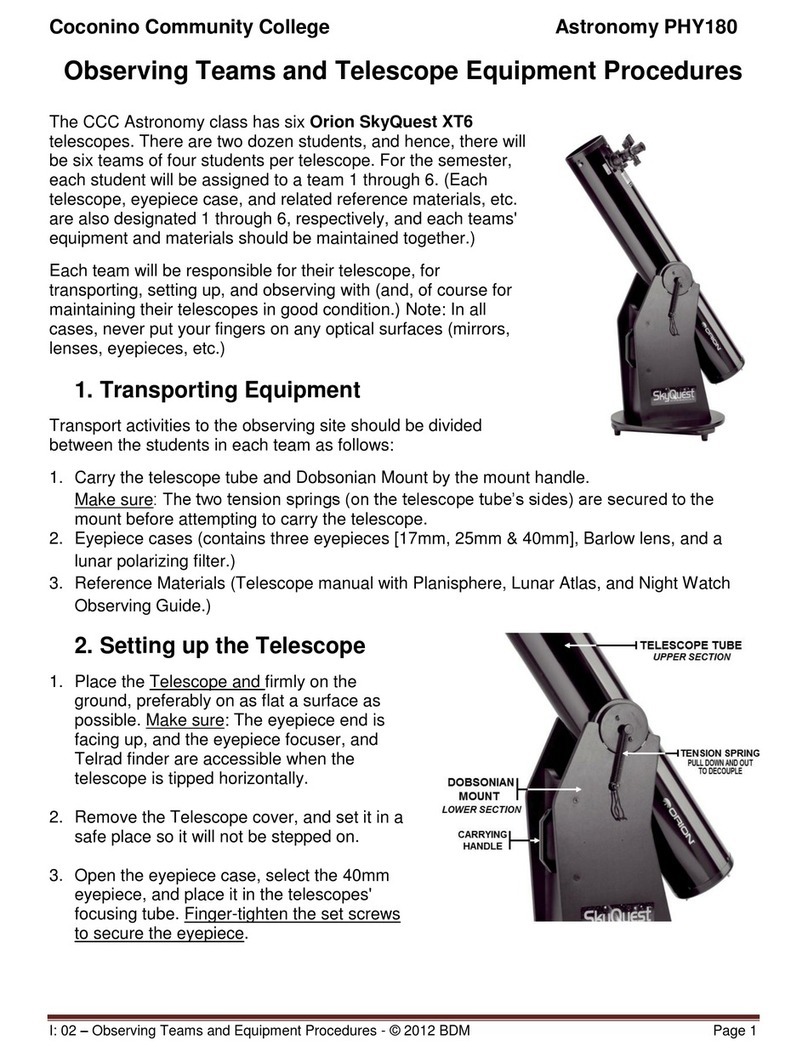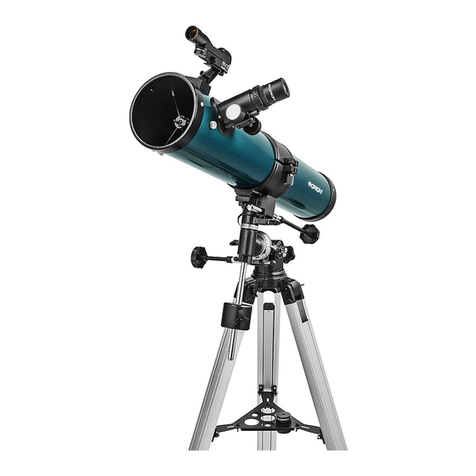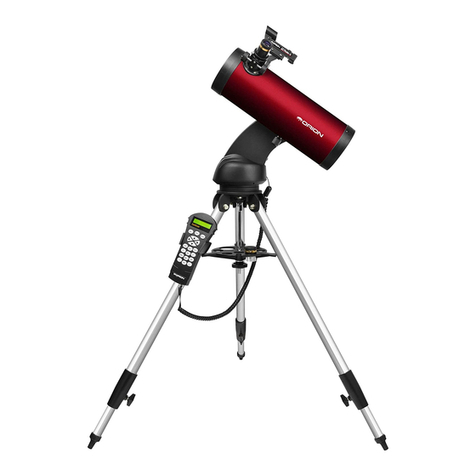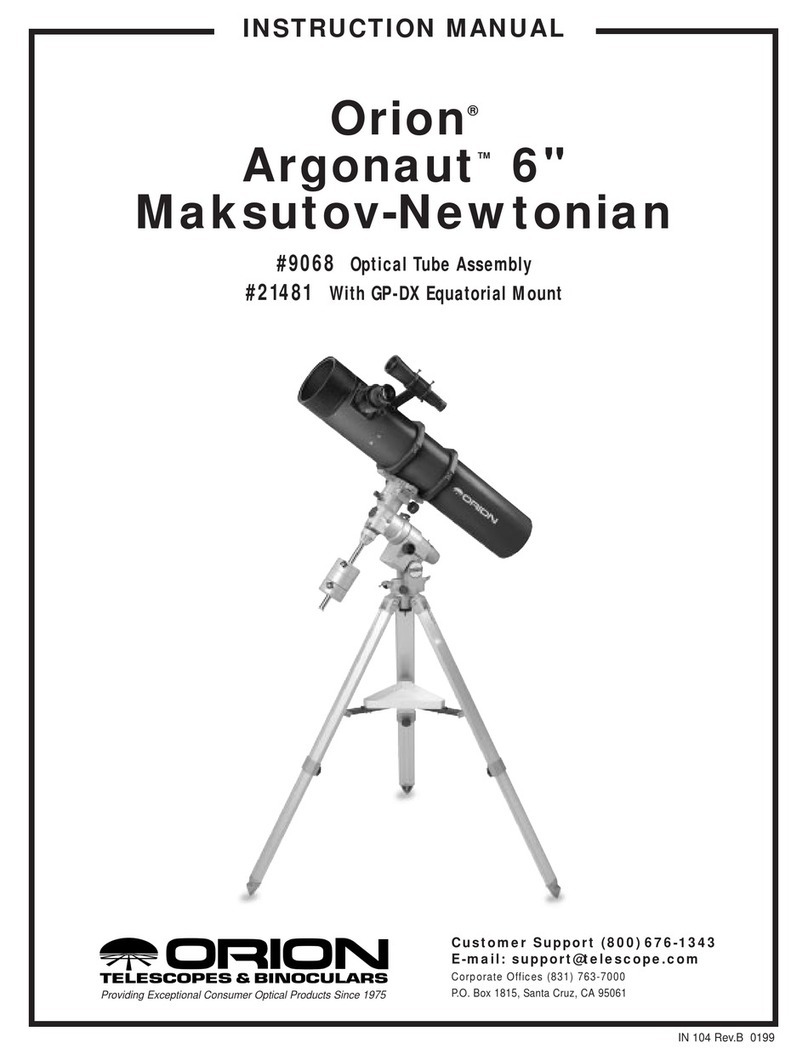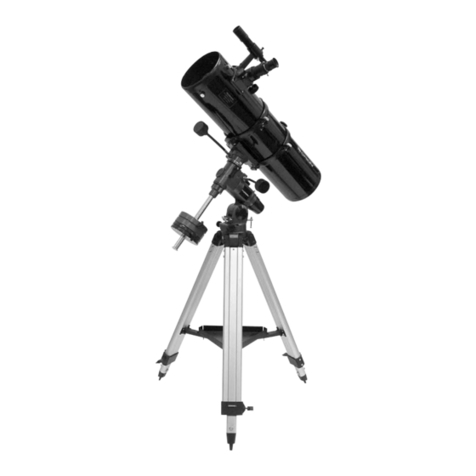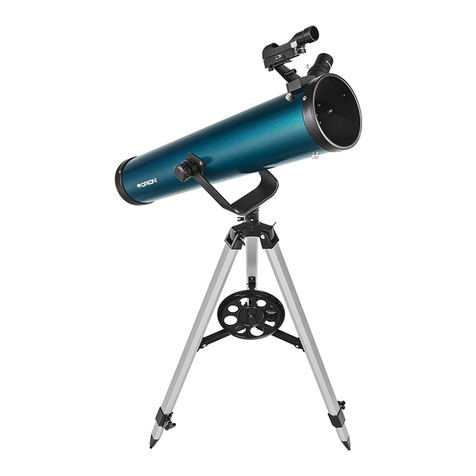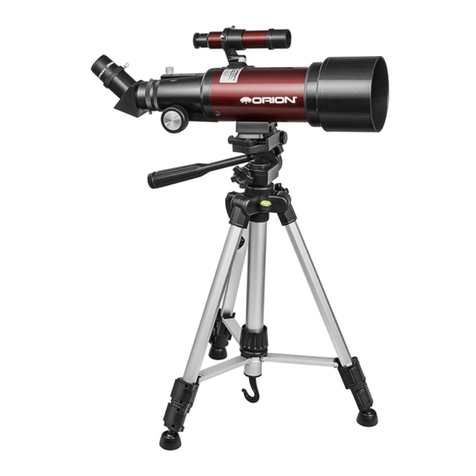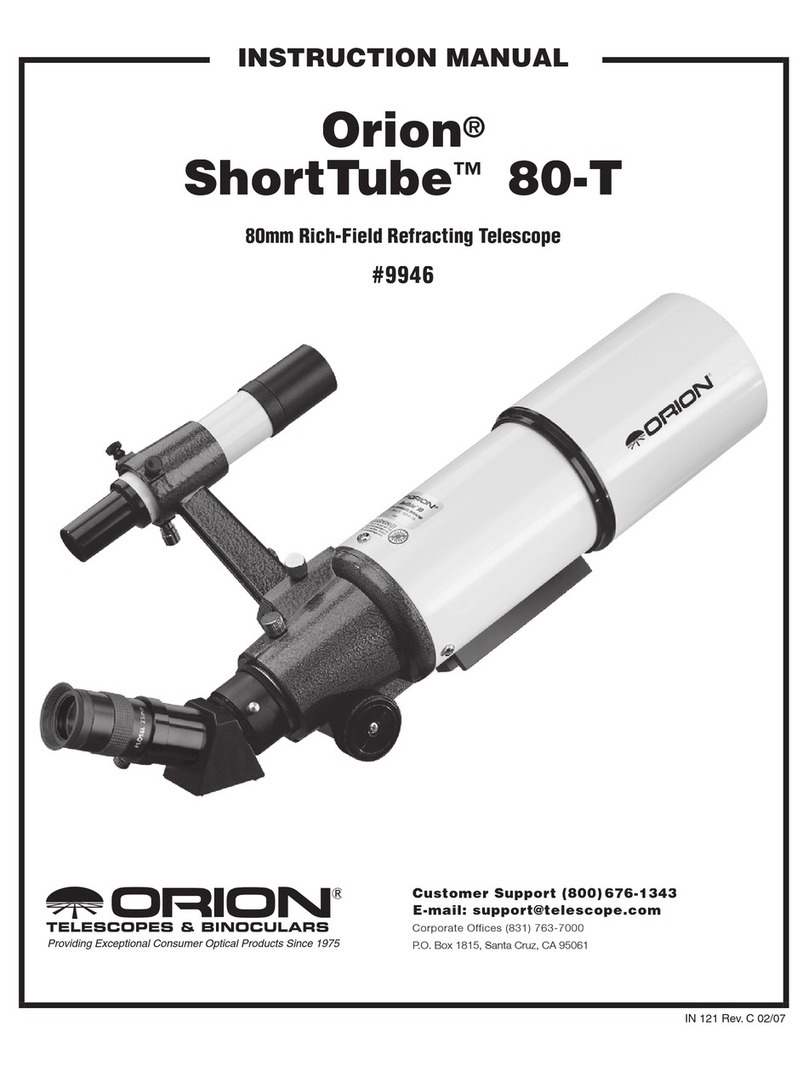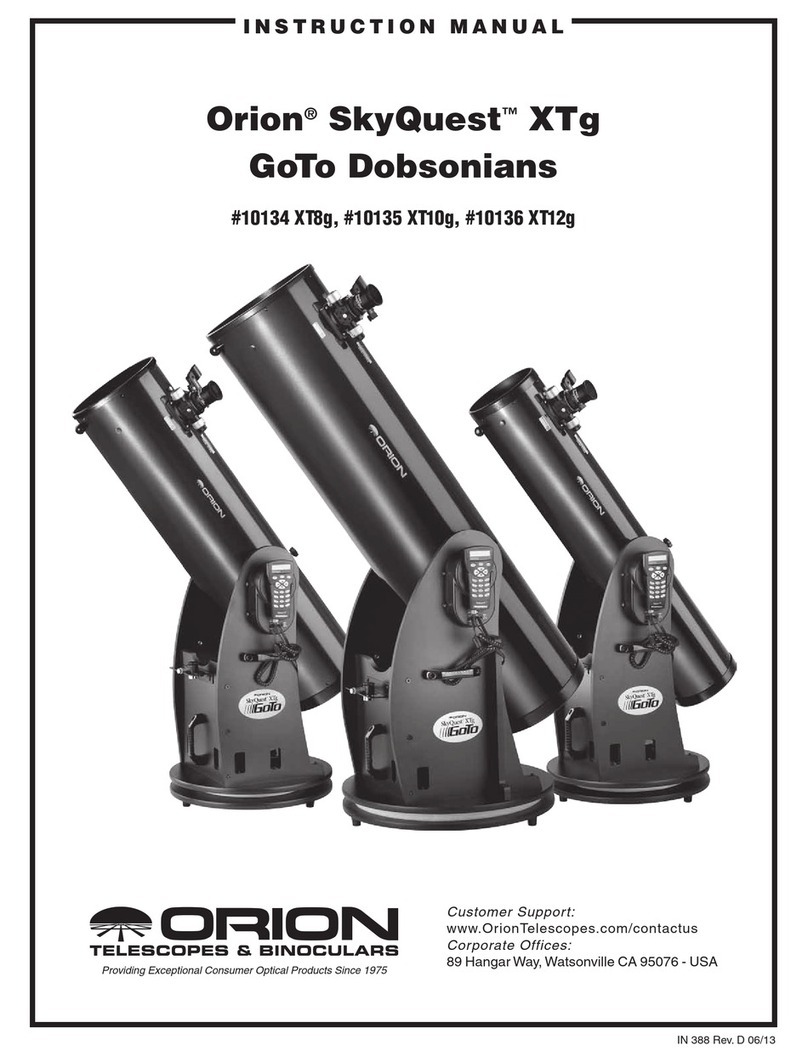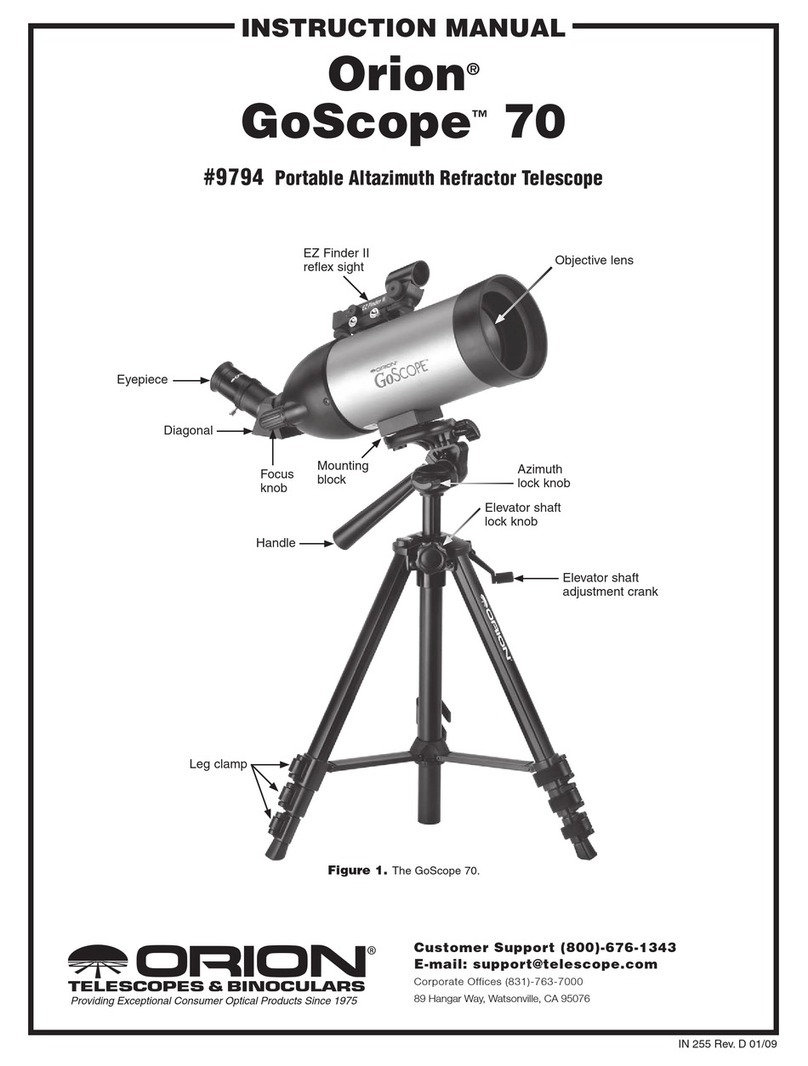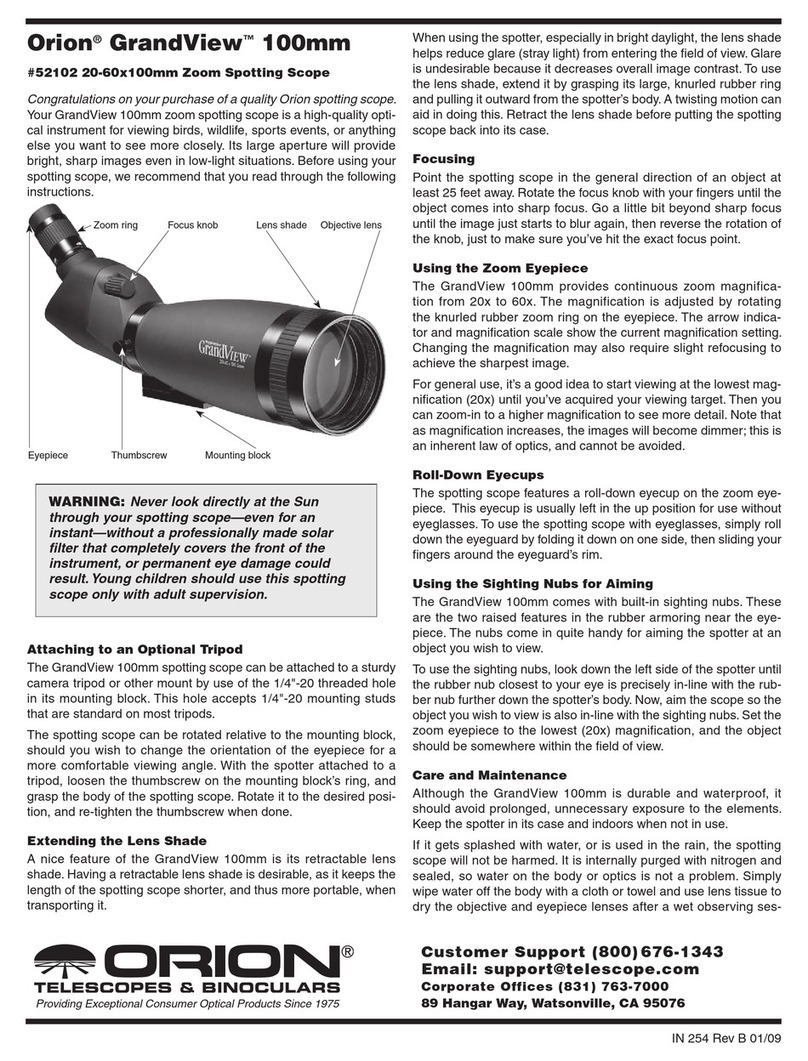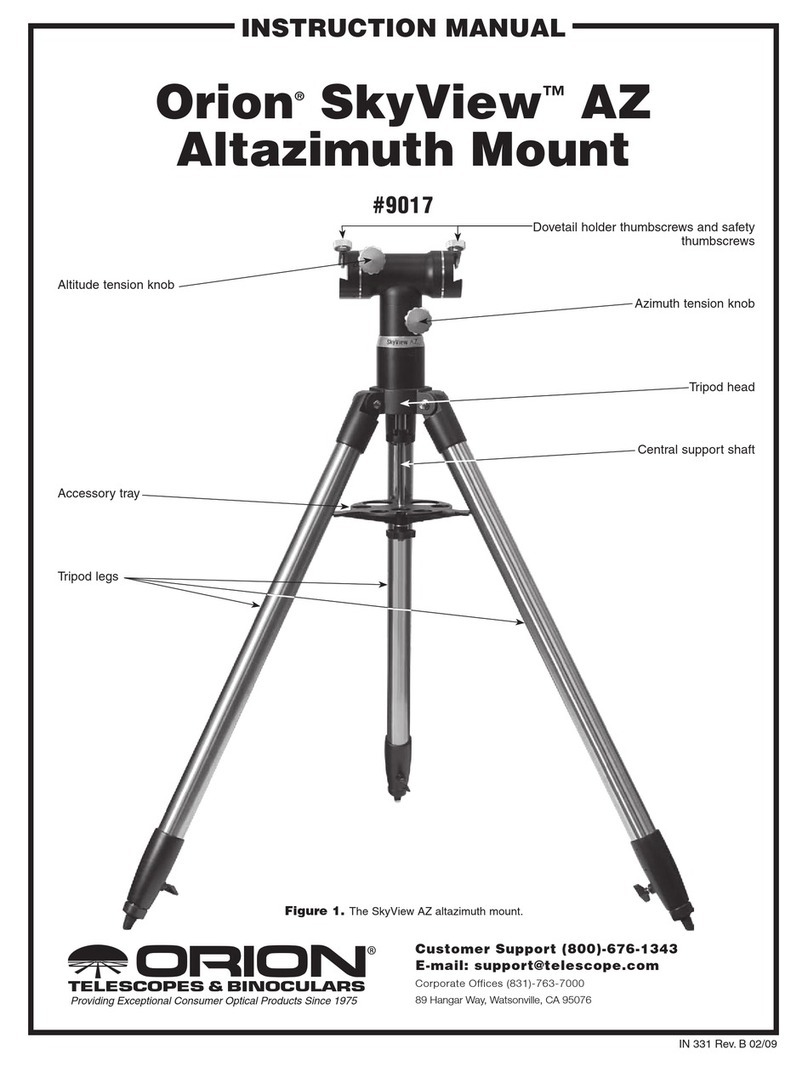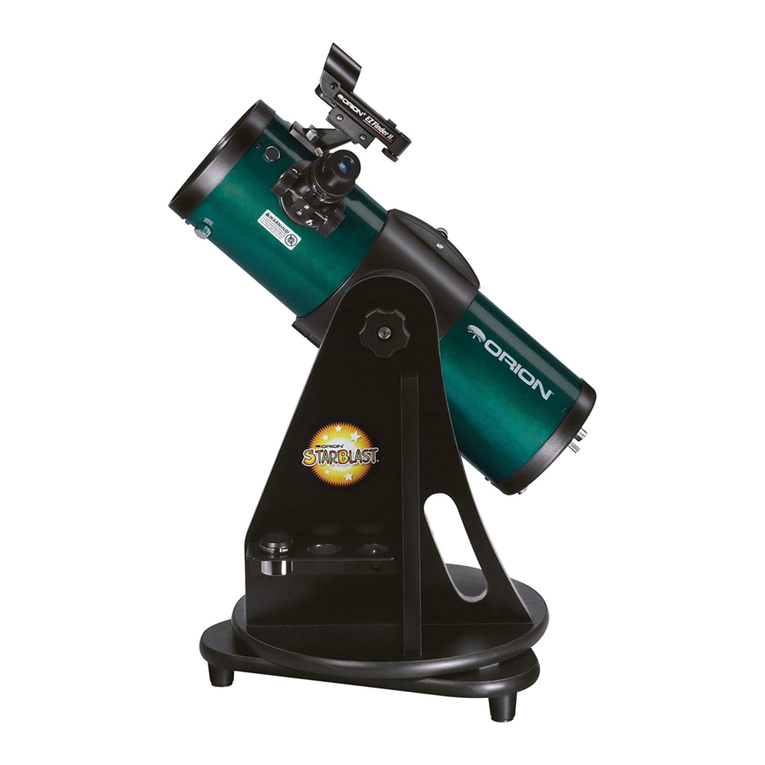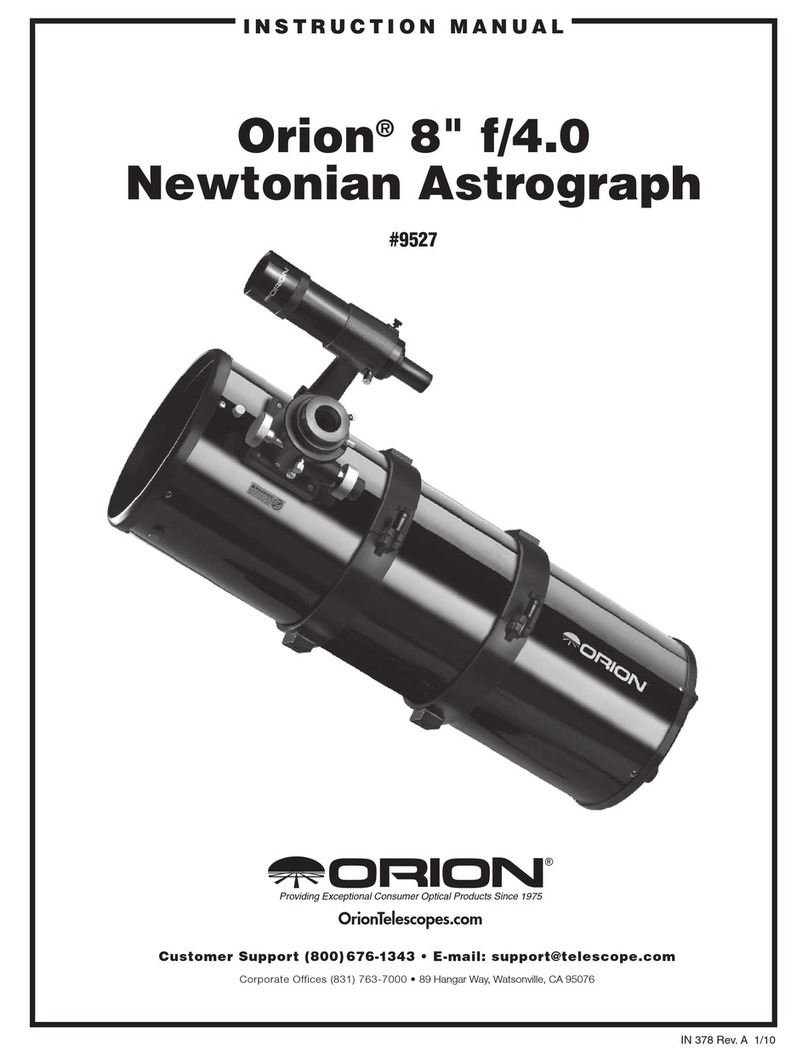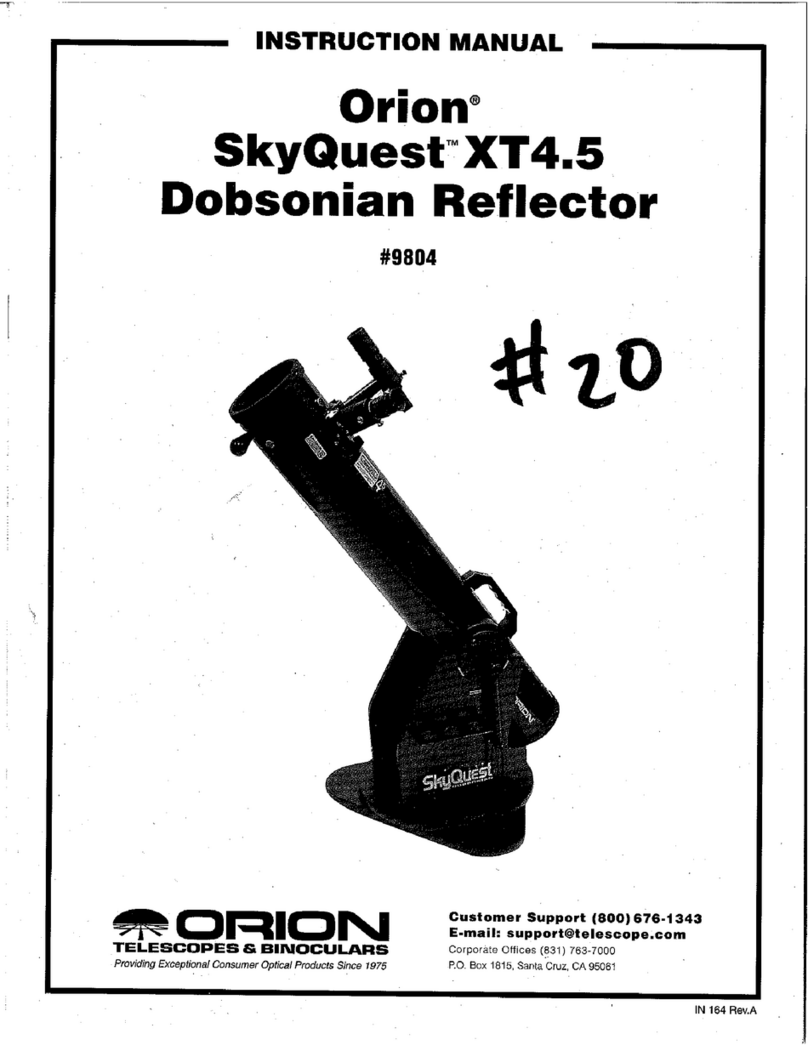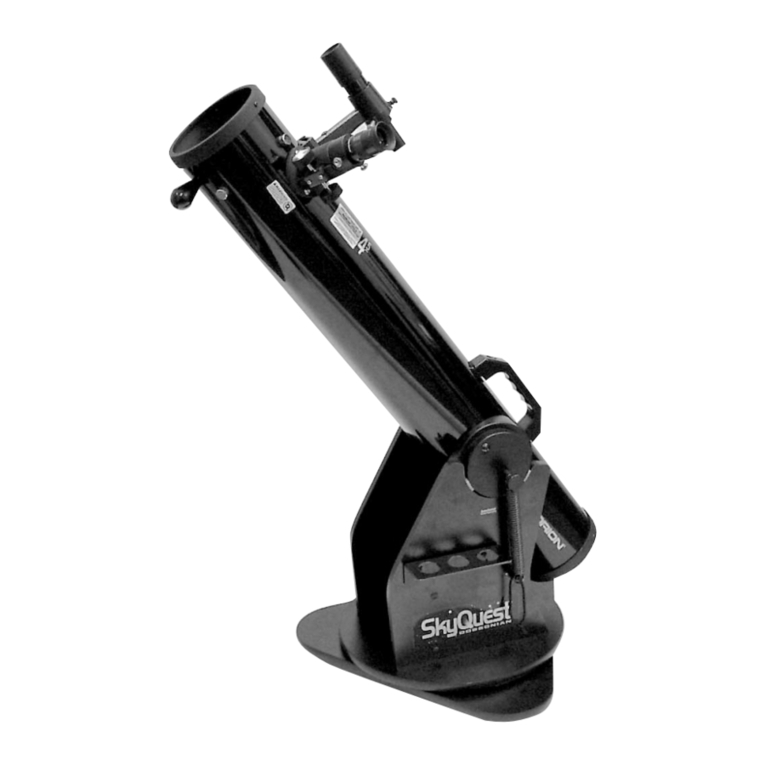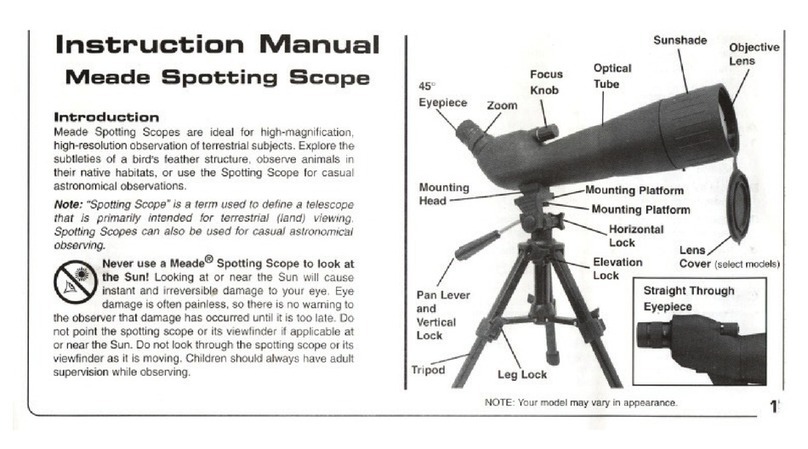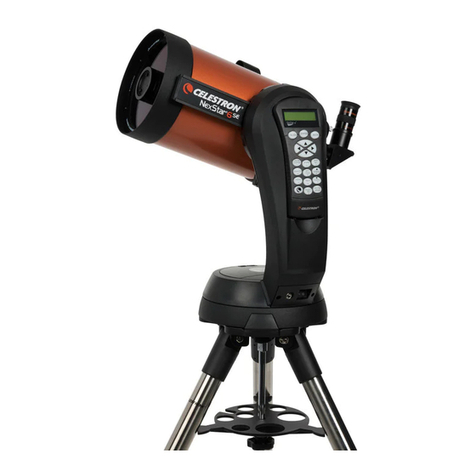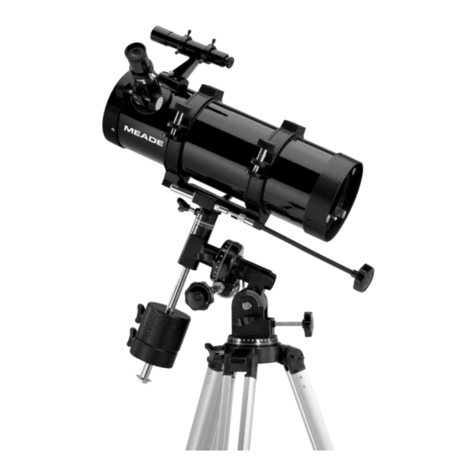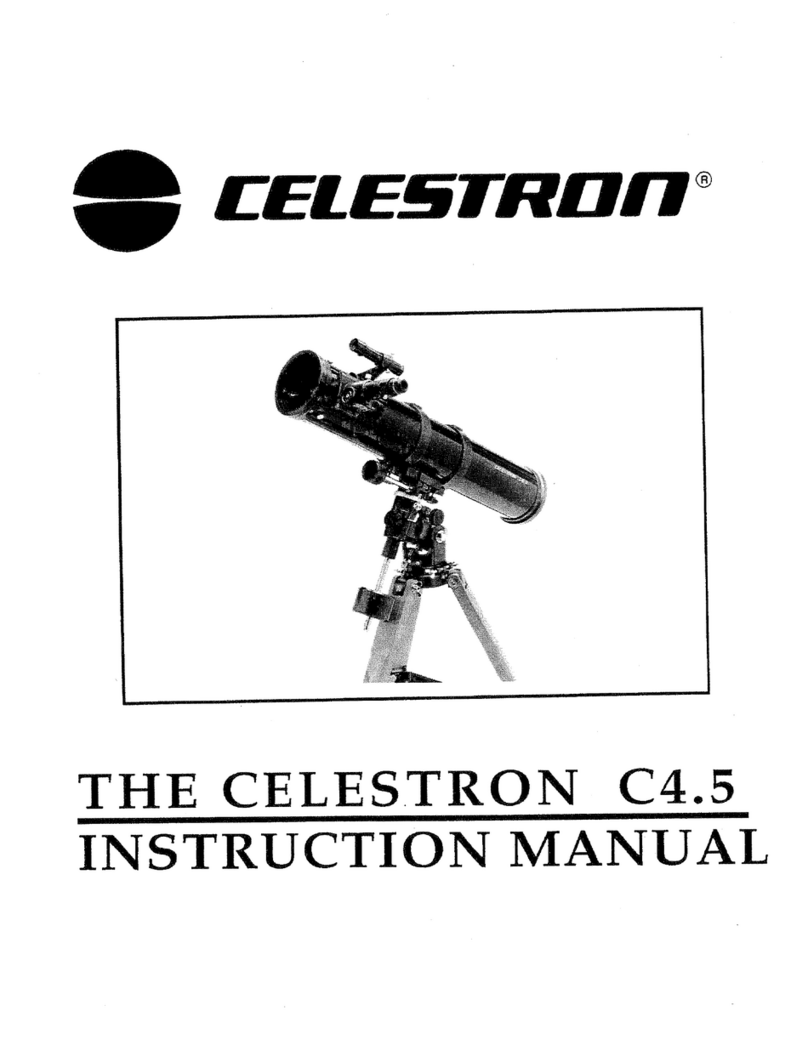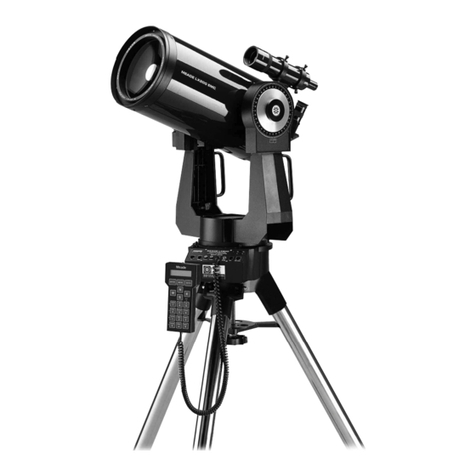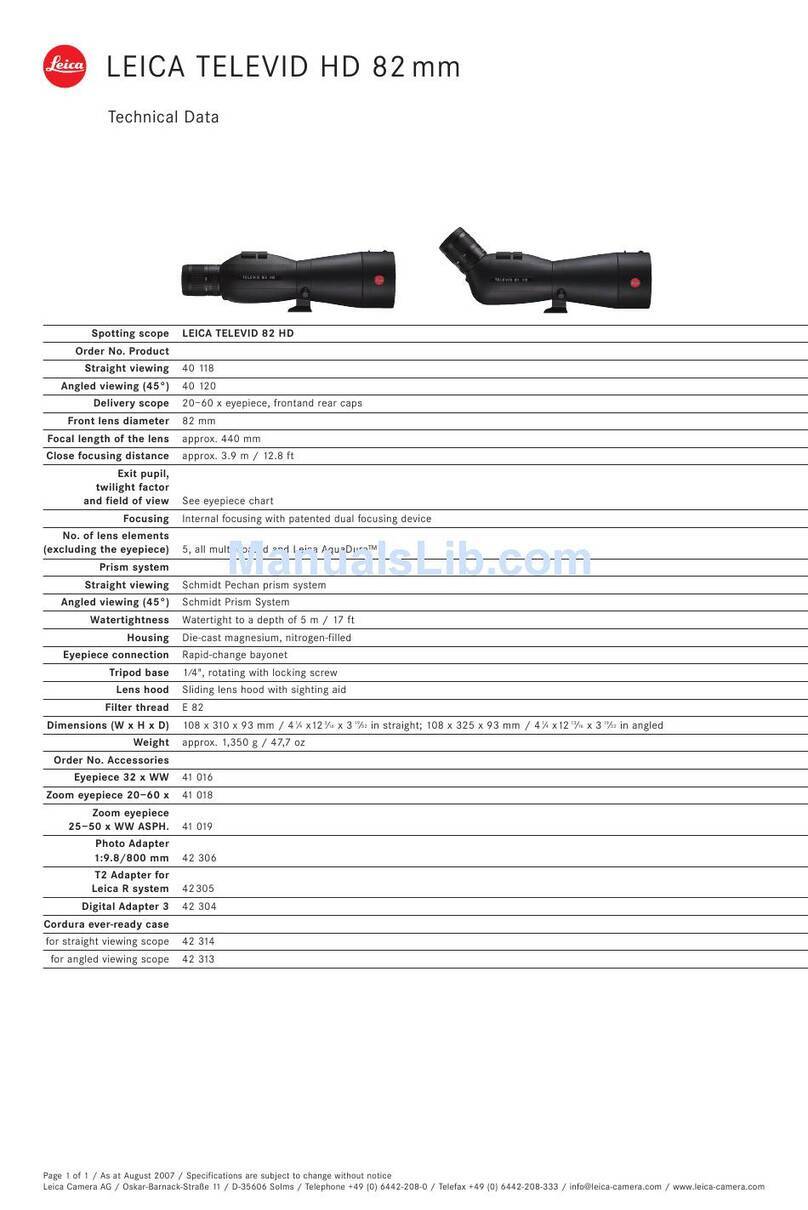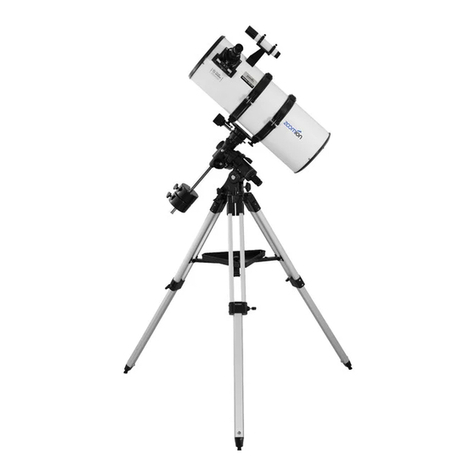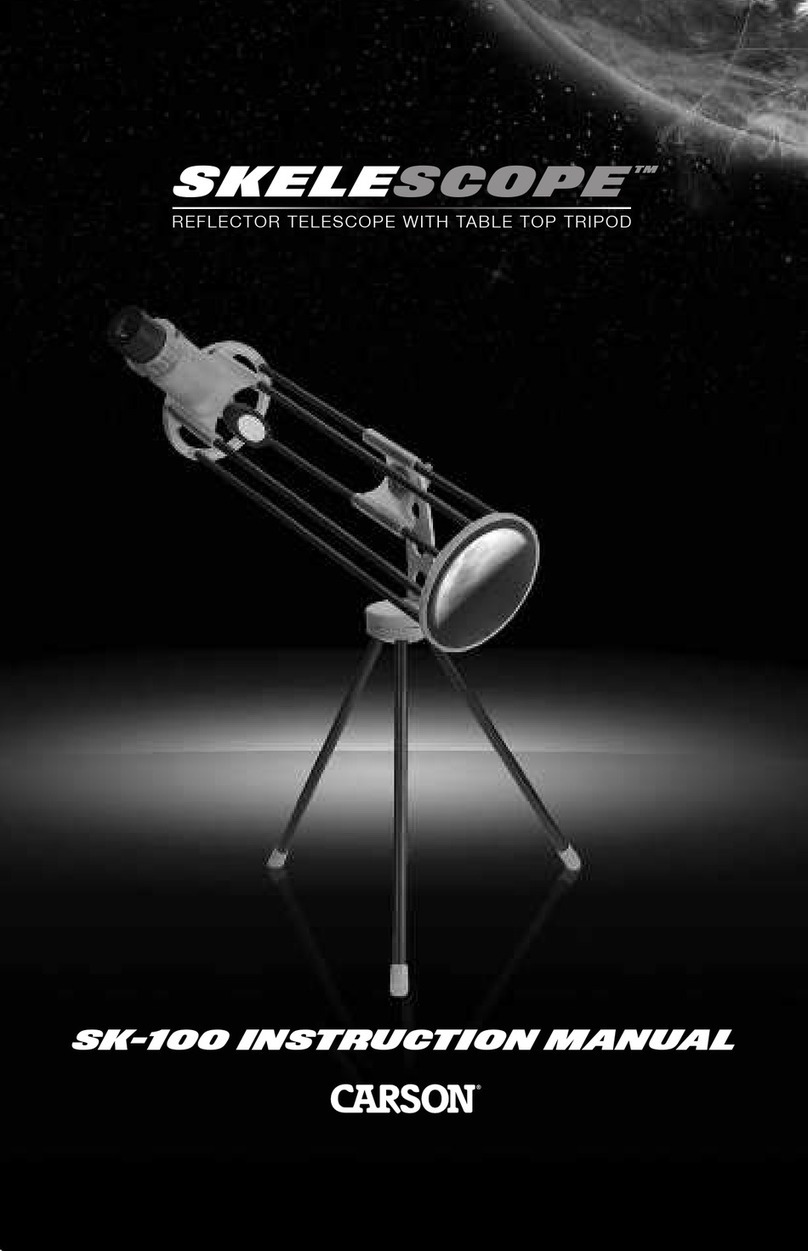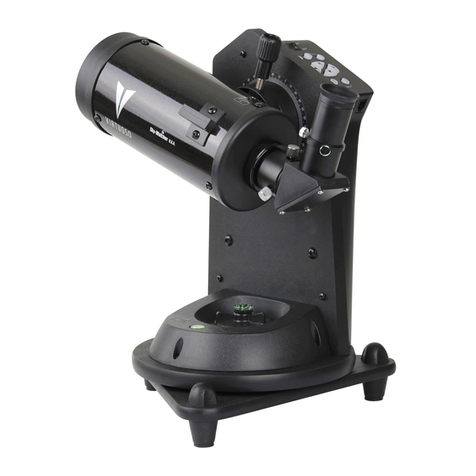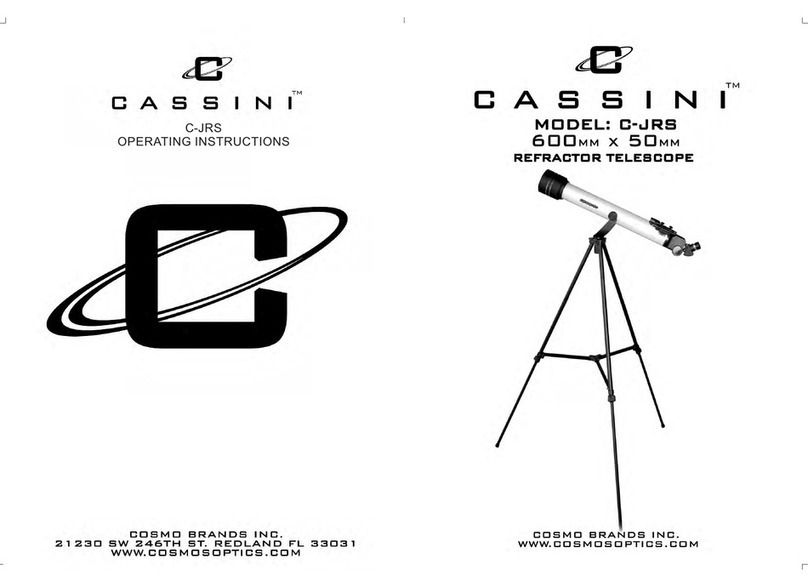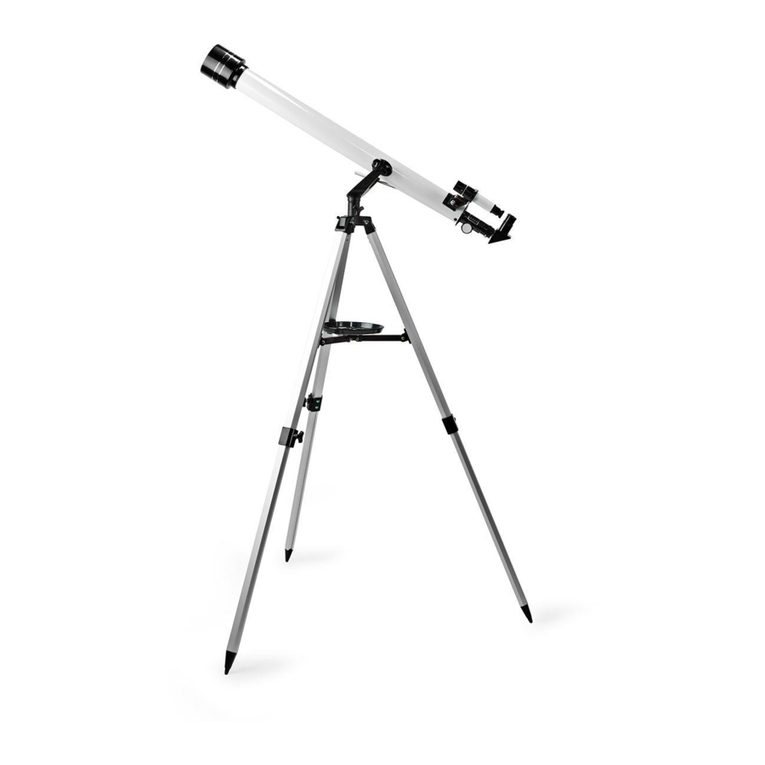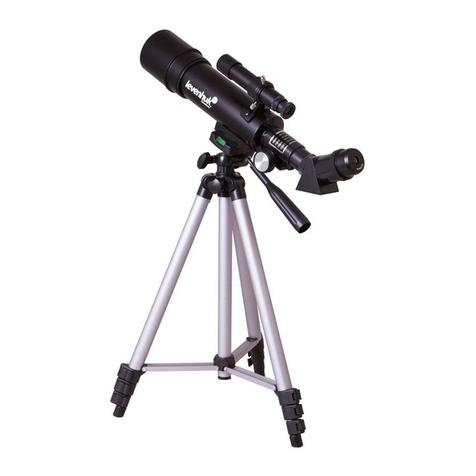
10
adapted, more stars will glimmer into view and you’ll be able to
see fainter details in objects you view in your telescope.
To see what you’re doing in the darkness, use a red‑filtered
flashlight rather than a white light. Red light does not spoil
your eyes’ dark adaptation like white light does. A flashlight
with a red LED light is ideal, or you can cover the front of a
regular incandescent flashlight with red cellophane or paper.
Beware, too, that nearby porch and streetlights and car head‑
lights will ruin your night vision.
Eyepiece Selection
By using eyepieces of varying focal lengths, it is possible to
attain many magnifications with the StarMax 90mm EQ. The
telescope comes with one high‑quality 25mm Sirius Plössl,
which gives a magnification of 50x. Other eyepieces can be
used to achieve higher or lower powers. It is quite common for
an observer to own five or more eyepieces to access a wide
range of magnifications.This allows the observer to choose the
best eyepiece to use depending on the object being viewed.
To calculate the magnification, or power, of a telescope and
eyepiece combination, simply divide the focal length of the
telescope by the focal length of the eyepiece:
Magnification =
(focal length of telescope) ÷ (focal length of eyepiece)
For example, the StarMax 90mm EQ, which has a focal length
of 1250mm, used in combination with the 25mm eyepiece,
yields a power of
1250mm ÷ 25mm = 50x
Every telescope has a useful limit of power of about 2x per
mm of aperture (about 180x for the StarMax 90mm EQ).
Claims of higher power by some telescope manufacturers are
a misleading advertising gimmick and should be dismissed.
Keep in mind that at higher powers, an image will always be
dimmer and less sharp (this is a fundamental law of optics).
The steadiness of the air (the “seeing") will also limit how
much magnification an image can tolerate.
Whatever you choose to view, always start by inserting your
lowest‑power (longest focal length) eyepiece to locate and
center the object. Low magnification yields a wide field of
view, which shows a larger area of sky in the eyepiece. This
makes acquiring and centering an object much easier. If you
try to find and center objects with high power (narrow field of
view), it’s like trying to find a needle in a haystack!
Once you’ve centered the object in the eyepiece, you can
switch to higher magnification (shorter focal length eyepiece),
if you wish. This is especially recommended for small and
bright objects, like planets and double stars. The Moon also
takes higher magnifications well.
Deep‑sky objects, however, typically look better at medium
or low magnifications. This is because many of them are
quite faint, yet have some extent (apparent width). Deep‑sky
objects will often disappear at higher magnifications, since
greater magnification inherently yields dimmer images. This
is not the case for all deep‑sky objects, however. Many galax‑
ies are quite small, yet are somewhat bright, so higher power
may show more detail.
The best rule of thumb with eyepiece selection is to start
with a low power, wide field, and then work your way up in
magnification. If the object looks better, try an even higher
magnification. If the object looks worse, then back off the
magnification a little by using a lower‑power eyepiece.
Rotating the Diagonal
When looking at objects in different areas of the night sky,
the eyepiece may become positioned so that is uncomfort‑
able or impossible to look through. If the eyepiece is in an
undesirable position, the diagonal can be rotated in order to
provide a more comfortable viewing angle. First, loosen the
thumb screws on the eyepiece adapter, but make sure to hold
the diagonal in place so that it won’t fall to the ground. Also,
secure the eyepiece in the diagonal so that it won’t fall out
when rotating the diagonal. Retighten the thumb screws on
the eyepiece adapter once the diagonal has been rotated to
an appropriate position.
Objects to Observe
Now that you are all set up and ready to go, one critical deci‑
sion must be made: what to look at?
A. The Moon
With its rocky surface, the Moon is one of the easiest and most
interesting targets to view with your telescope. Lunar craters,
marias, and even mountain ranges can all be clearly seen
from a distance of 238,000 miles away! With its ever‑chang‑
ing phases, you’ll get a new view of the Moon every night. The
best time to observe our one and only natural satellite is dur‑
ing a partial phase, that is, when the Moon is NOT full. During
partial phases, shadows are cast on the surface, which reveal
more detail, especially right along the border between the dark
and light portions of the disk (called the “terminator"). A full
Moon is too bright and devoid of surface shadows to yield a
pleasing view. Make sure to observe the Moon when it is well
above the horizon to get the sharpest images.
Use an optional Moon filter to dim the Moon when it is very
bright. It simply threads onto the bottom of the eyepieces (you
must first remove the eyepiece from the focuser to attach a fil‑
ter). You’ll find that the Moon filter improves viewing comfort,
and also helps to bring out subtle features on the lunar sur‑
face.
B. The Sun
You can change your nighttime telescope into a daytime Sun
viewer by installing an optional full‑aperture solar filter over
the front opening of the StarMax 90mm EQ. The primary
attraction is sunspots, which change shape, appearance, and
location daily. Sunspots are directly related to magnetic activity
in the Sun. Many observers like to make drawings of sunspots
to monitor how the Sun is changing from day to day.
Important Note: Do not look at the Sun with any optical
instrument without a professionally made solar filter, or
permanent eye damage could result.
